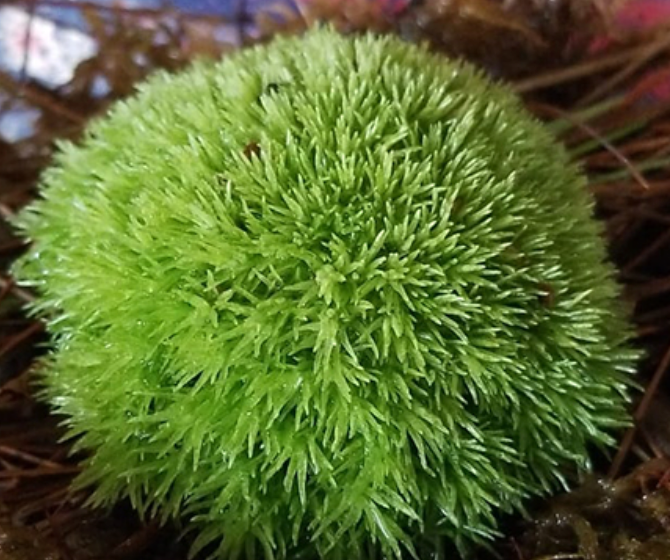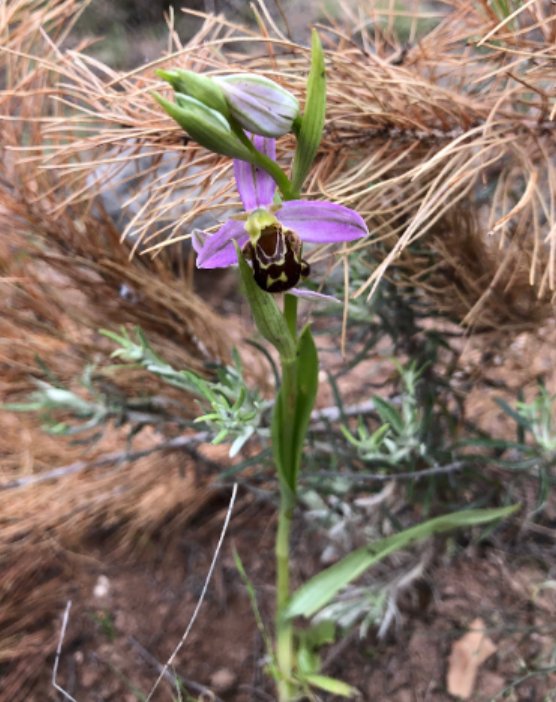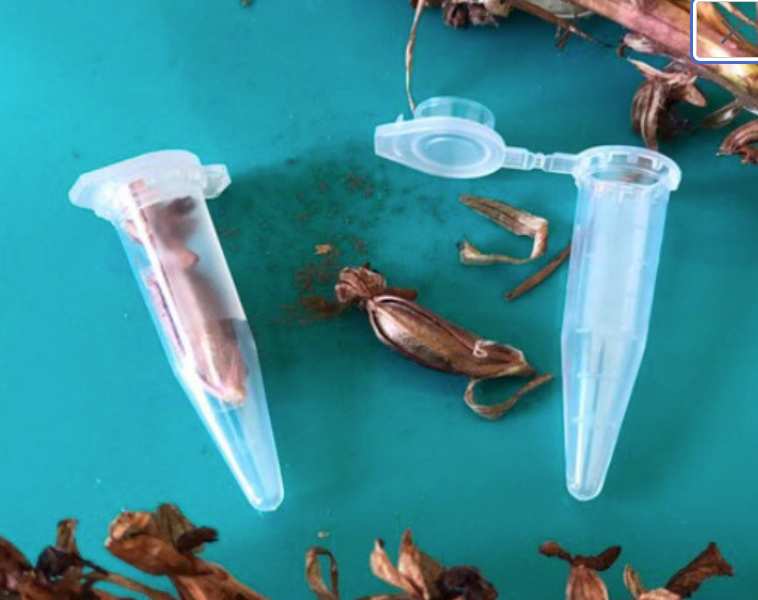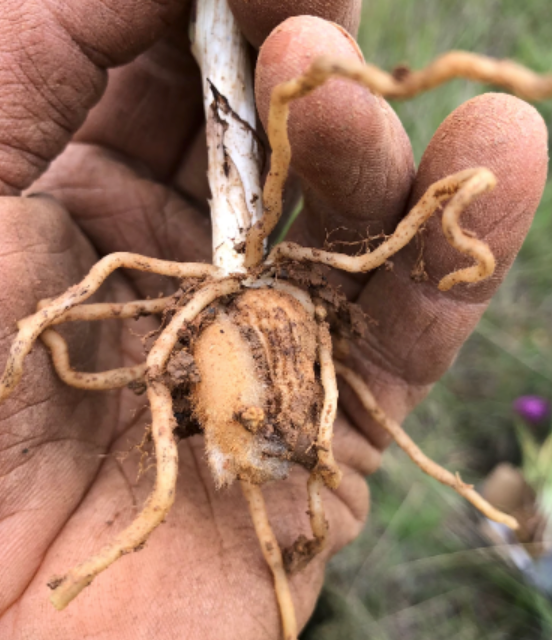The Bryophyta nursery
Ophrys apifera, bee orchid, 1 bulb or seed pod and substrate
Ophrys apifera, bee orchid, 1 bulb or seed pod and substrate
Prix habituel
€12,00 EUR
Prix habituel
Prix soldé
€12,00 EUR
Prix unitaire
par
Taxes incluses.
Frais d'expédition calculés à l'étape de paiement.
Impossible de charger la disponibilité du service de retrait
We ship with DHL Express for international shipping, we do free shipping worldwide after 100 euros of items are bought with coupon FREESHIPPING100.
Ophrys apifera, known in Europe as the bee orchid, is a perennial herbaceous plant of the family Orchidaceae. It serves as an example of sexually deceptive pollination and floral mimicry, as well as of a highly selective and highly evolved plant–pollinator relationship
Our bulbs are grown in red clay on our farm. We package them in moss for safe travels to you.
Our seed pods are harvested at just the right time while still closed yet ripe. We dehydrate them at 35 degrees and put the in plastic seed containers for the perfect condition until use.
We sell the red clay substrate 100g which we recommend using, and a sheet of moss which we recommend place on top of the substrate once the seeds are sown.
We also recommend buying one 2 year bulb o grow in the same substrate as the seeds, success of germination is significantly higher when a bulb is grown near them, a 2 year old bulb is sufficient, this is because of a relationship with mycorrhizal fungus.
How to sow: mix the red clay substrate with potting soil - in a seeding tray 7-10cm thick, water substrate then compact it with your fist. Take the seed pod and crushed it slightly, a fine dust of seeds will come out, once the seeds are out do not touch them. Cover with the moss sheet, then water gently, the water will disperse the seeds more.
Place the tray in the fridge for 12 weeks for a chilling time.
Take the tray out and place in partial shade spray with water once a week.
germination in 8 or 11 months
The success of germination is significantly higher when a bulb is grown near them, a 2 year old bulb is sufficient, this is because of a relationship with mycorrhizal fungus.
Ophrys apifera grows to a height of 15–50 centimetres (6–20 in). This hardy orchid develops small rosettes of leaves in autumn that continue to grow slowly during winter. Basal leaves are ovate or oblong-lanceolate, and upper leaves and bracts are ovate-lanceolate and sheathing. Leaves exhibit parallel venation. The plant blooms from mid-April in continental Europe, but in the United Kingdom it flowers June to July. A flower spike is produced, composed from one to twelve flowers. Three large, purple sepals surround the base of the flower, which can easily be mistaken for petals. The true petals lie just above the sepals as two short, pubescent green structures protruding laterally from a central column. A third, modified petal, the labellum, sits at the bottom of the column as a landing pad for pollinators. The labellum is trilobed, with two pronounced humps on the hairy lateral lobes and a hairy median lobe having a pattern that mimics the abdomen of a bee. The pattern of labellum colouration is quite variable.
Growing:
Choose a planting site that receives dappled to partial shade. If you live in a growing region that is very hot and dry, you will need to choose a location that receives a bit more shade than sun. Plan to plant your orchid bulbs in the spring when the threat of frost has passed in your growing region.
Dig holes with your fingers or a small trowel. The holes should be 3 to 4 inches deep and 2 to 3 inches wide. Space the holes 12 inches apart.
Place a bulb into each hole and lightly pack the soil around the bulbs. Gently tap down on the soil to ensure that no air pockets remain around the bulb. Water thoroughly and plan to water whenever the soil dries out. When the bulbs begin to sprout and grow, mist them every day or two with a water bottle.
Fertilize every two months during the growing season with a liquid plant fertilizer that is at half strength.
The central column is an adaptation unique to orchids, in which the stamens and pistil fused together to form one central rib. The anther cap can be found at the top, dorsal side of the column, while the stigma is hidden below on the ventral side. Two pollinia hang from the column over the labellum.
Ophrys apifera is widespread across central and southern Europe, as well as North Africa and the Middle East. Its range stretches from Portugal, Ireland and Denmark east to Iran and the Caucasus. It is quite common in the Mediterranean region eastwards to the Black Sea, but is less common in its northern range being uncommon or local in Germany and Ireland.
The genus Ophrys is the most species-rich (i.e. diverse) genus of orchids in Europe and the Mediterranean with over 200 species, according to Orchids of Britain and Europe by Pierre Delforge.
Ophrys apifera generally grows on semi-dry turf, in grassland, on limestone, calcareous dunes or in open areas in woodland. It prefers well-drained calcareous soils, low in nutrients, in bright light or dim light. It is a major colonizer of sites disturbed by human activity, such as old quarries, roadside verges and airfields O. apifera is one of the most likely European orchid species to establish itself within towns and cities.
In order to extract sufficient nutrients from the substrata it grows in, Ophrys apifera relies upon a symbiotic relationship with mycorrhizal fungi in the genus Tulasnella, and possibly other genera.
This species of orchid is often threatened by mowing when it occurs during flowering or before seed has been released. However, it often also disappears from sites when they become overgrown with shrubs and/or trees, as it fails to compete with these large plants for light. For these reasons it is often found on the edge of areas that are mown, beside paths or within areas that are mown very infrequently. The Sussex Wildlife Trust recommends mowing at the end of July and removing the cuttings to benefit bee orchids. In prehistory, the species presumably relied upon seasonal grazing pressure, or was limited to early succession habitats and permanent grassland.
Ophrys apifera has been considered to preferentially practice self-pollination. The flowers are almost exclusively self-pollinating in the northern ranges of the plant's distribution, however pollination by the solitary bee Eucera longicornis occurs in the Mediterranean region, where Ophrys apifera is more common. E. longicornis males have been observed attempting to copulate with the flowers, which emit allomones that mimic the scent of the female bee. These allomones are also known to attract bee species Tetralonia cressa and Eucera pulveraceae. In addition to chemosensory mimicry, the labellum of the flower acts as a visual decoy that the male bee confuses for a female. It is believed that male bees preferentially select orchids with the most bee-like labellum and attempt copulation, at which point the pollinia stick to the bee during the pseudocopulation. This achieves pollen transfer and, potentially, pollination.
Ophrys apifera, known in Europe as the bee orchid, is a perennial herbaceous plant of the family Orchidaceae. It serves as an example of sexually deceptive pollination and floral mimicry, as well as of a highly selective and highly evolved plant–pollinator relationship
Our bulbs are grown in red clay on our farm. We package them in moss for safe travels to you.
Our seed pods are harvested at just the right time while still closed yet ripe. We dehydrate them at 35 degrees and put the in plastic seed containers for the perfect condition until use.
We sell the red clay substrate 100g which we recommend using, and a sheet of moss which we recommend place on top of the substrate once the seeds are sown.
We also recommend buying one 2 year bulb o grow in the same substrate as the seeds, success of germination is significantly higher when a bulb is grown near them, a 2 year old bulb is sufficient, this is because of a relationship with mycorrhizal fungus.
How to sow: mix the red clay substrate with potting soil - in a seeding tray 7-10cm thick, water substrate then compact it with your fist. Take the seed pod and crushed it slightly, a fine dust of seeds will come out, once the seeds are out do not touch them. Cover with the moss sheet, then water gently, the water will disperse the seeds more.
Place the tray in the fridge for 12 weeks for a chilling time.
Take the tray out and place in partial shade spray with water once a week.
germination in 8 or 11 months
The success of germination is significantly higher when a bulb is grown near them, a 2 year old bulb is sufficient, this is because of a relationship with mycorrhizal fungus.
Ophrys apifera grows to a height of 15–50 centimetres (6–20 in). This hardy orchid develops small rosettes of leaves in autumn that continue to grow slowly during winter. Basal leaves are ovate or oblong-lanceolate, and upper leaves and bracts are ovate-lanceolate and sheathing. Leaves exhibit parallel venation. The plant blooms from mid-April in continental Europe, but in the United Kingdom it flowers June to July. A flower spike is produced, composed from one to twelve flowers. Three large, purple sepals surround the base of the flower, which can easily be mistaken for petals. The true petals lie just above the sepals as two short, pubescent green structures protruding laterally from a central column. A third, modified petal, the labellum, sits at the bottom of the column as a landing pad for pollinators. The labellum is trilobed, with two pronounced humps on the hairy lateral lobes and a hairy median lobe having a pattern that mimics the abdomen of a bee. The pattern of labellum colouration is quite variable.
Growing:
Choose a planting site that receives dappled to partial shade. If you live in a growing region that is very hot and dry, you will need to choose a location that receives a bit more shade than sun. Plan to plant your orchid bulbs in the spring when the threat of frost has passed in your growing region.
Dig holes with your fingers or a small trowel. The holes should be 3 to 4 inches deep and 2 to 3 inches wide. Space the holes 12 inches apart.
Place a bulb into each hole and lightly pack the soil around the bulbs. Gently tap down on the soil to ensure that no air pockets remain around the bulb. Water thoroughly and plan to water whenever the soil dries out. When the bulbs begin to sprout and grow, mist them every day or two with a water bottle.
Fertilize every two months during the growing season with a liquid plant fertilizer that is at half strength.
The central column is an adaptation unique to orchids, in which the stamens and pistil fused together to form one central rib. The anther cap can be found at the top, dorsal side of the column, while the stigma is hidden below on the ventral side. Two pollinia hang from the column over the labellum.
Ophrys apifera is widespread across central and southern Europe, as well as North Africa and the Middle East. Its range stretches from Portugal, Ireland and Denmark east to Iran and the Caucasus. It is quite common in the Mediterranean region eastwards to the Black Sea, but is less common in its northern range being uncommon or local in Germany and Ireland.
The genus Ophrys is the most species-rich (i.e. diverse) genus of orchids in Europe and the Mediterranean with over 200 species, according to Orchids of Britain and Europe by Pierre Delforge.
Ophrys apifera generally grows on semi-dry turf, in grassland, on limestone, calcareous dunes or in open areas in woodland. It prefers well-drained calcareous soils, low in nutrients, in bright light or dim light. It is a major colonizer of sites disturbed by human activity, such as old quarries, roadside verges and airfields O. apifera is one of the most likely European orchid species to establish itself within towns and cities.
In order to extract sufficient nutrients from the substrata it grows in, Ophrys apifera relies upon a symbiotic relationship with mycorrhizal fungi in the genus Tulasnella, and possibly other genera.
This species of orchid is often threatened by mowing when it occurs during flowering or before seed has been released. However, it often also disappears from sites when they become overgrown with shrubs and/or trees, as it fails to compete with these large plants for light. For these reasons it is often found on the edge of areas that are mown, beside paths or within areas that are mown very infrequently. The Sussex Wildlife Trust recommends mowing at the end of July and removing the cuttings to benefit bee orchids. In prehistory, the species presumably relied upon seasonal grazing pressure, or was limited to early succession habitats and permanent grassland.
Ophrys apifera has been considered to preferentially practice self-pollination. The flowers are almost exclusively self-pollinating in the northern ranges of the plant's distribution, however pollination by the solitary bee Eucera longicornis occurs in the Mediterranean region, where Ophrys apifera is more common. E. longicornis males have been observed attempting to copulate with the flowers, which emit allomones that mimic the scent of the female bee. These allomones are also known to attract bee species Tetralonia cressa and Eucera pulveraceae. In addition to chemosensory mimicry, the labellum of the flower acts as a visual decoy that the male bee confuses for a female. It is believed that male bees preferentially select orchids with the most bee-like labellum and attempt copulation, at which point the pollinia stick to the bee during the pseudocopulation. This achieves pollen transfer and, potentially, pollination.
Materials
Materials
Shipping & Returns
Shipping & Returns
Dimensions
Dimensions
Care Instructions
Care Instructions
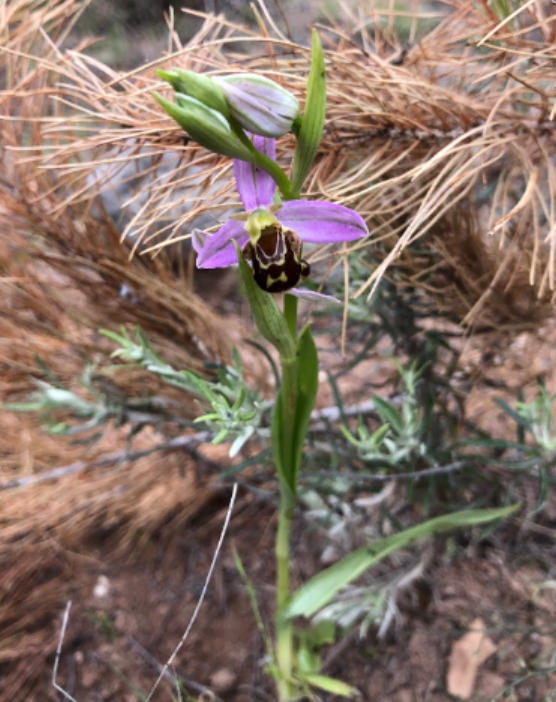

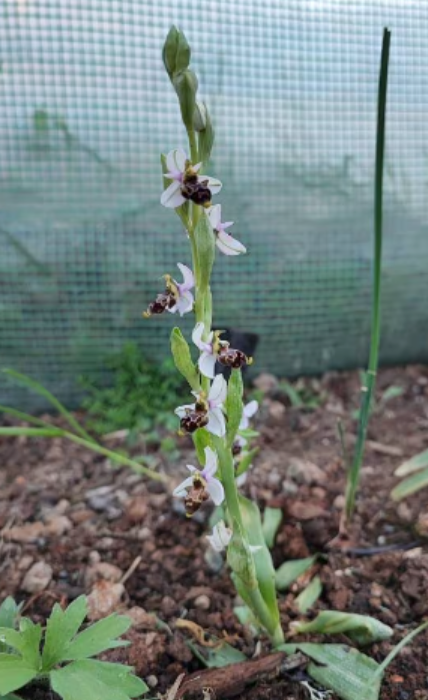

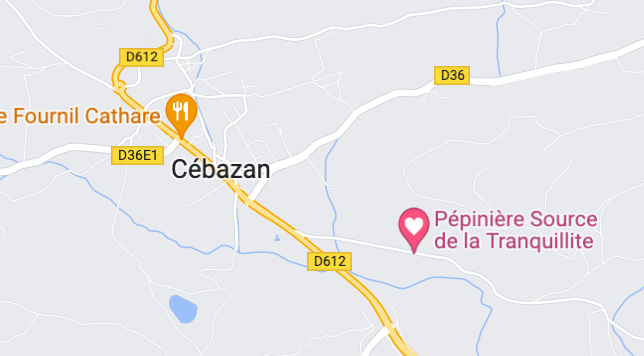
-
Free Shipping
We offer free shipping in France! and internationally for orders of 500 euros or more.
